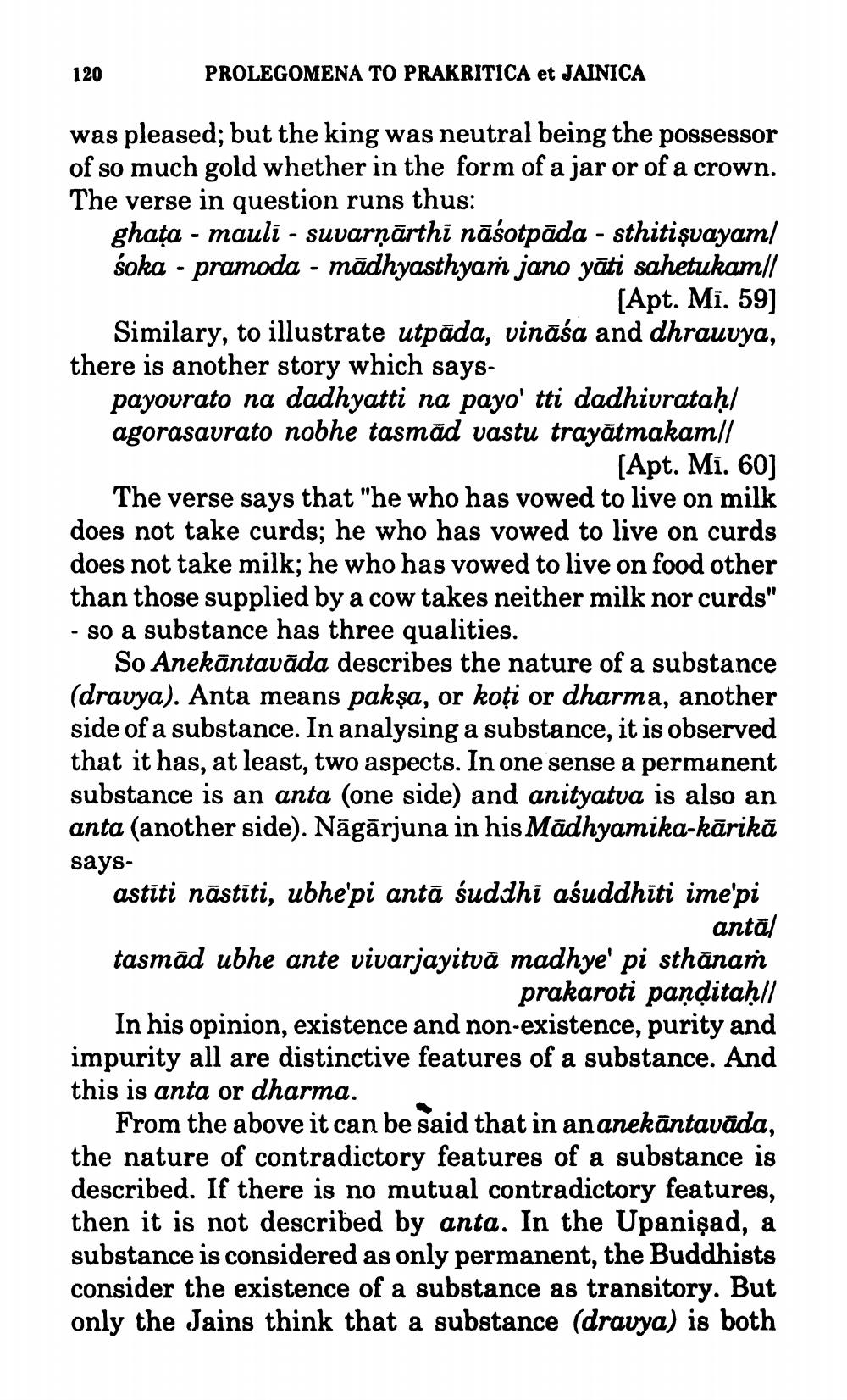________________
120
PROLEGOMENA TO PRAKRITICA et JAINICA
was pleased; but the king was neutral being the possessor of so much gold whether in the form of a jar or of a crown. The verse in question runs thus:
ghața - mauli - suvarņārthi nāšotpāda - sthitişvayam/ śoka - pramoda - mādhyasthyam jano yāti sahetukamll
[Apt. Mi. 59] Similary, to illustrate utpāda, vināśa and dhrauvya, there is another story which says
payovrato na dadhyatti na payo' tti dadhivratah/ agorasavrato nobhe tasmād vastu trayātmakam//
[Apt. Mi. 60) The verse says that "he who has vowed to live on milk does not take curds; he who has vowed to live on curds does not take milk; he who has vowed to live on food other than those supplied by a cow takes neither milk nor curds" - so a substance has three qualities.
So Anekāntavāda describes the nature of a substance (dravya). Anta means pakşa, or koți or dharma, another side of a substance. In analysing a substance, it is observed that it has, at least, two aspects. In one sense a permanent substance is an anta (one side) and anityatva is also an anta (another side). Nāgārjuna in his Mādhyamika-kārikā saysastiti nāstīti, ubhe'pi antā śuddhi aśuddhīti ime'pi
antā tasmād ubhe ante vivarjayitvā madhye' pi sthānań
prakaroti panditah// In his opinion, existence and non-existence, purity and impurity all are distinctive features of a substance. And this is anta or dharma.
From the above it can be said that in ananekāntavāda, the nature of contradictory features of a substance is described. If there is no mutual contradictory features, then it is not described by anta. In the Upanişad, a substance is considered as only permanent, the Buddhists consider the existence of a substance as transitory. But only the Jains think that a substance (dravya) is both




